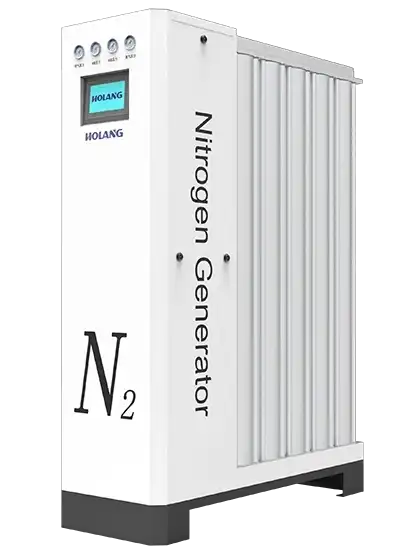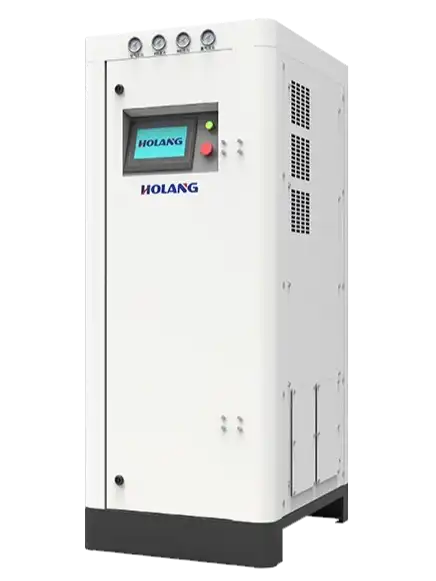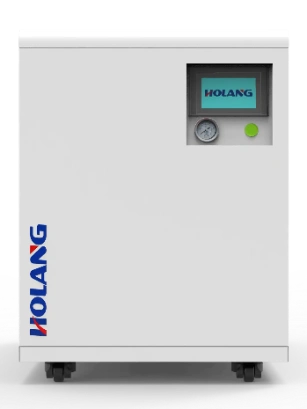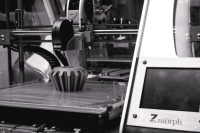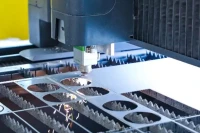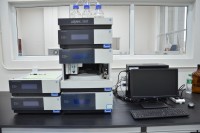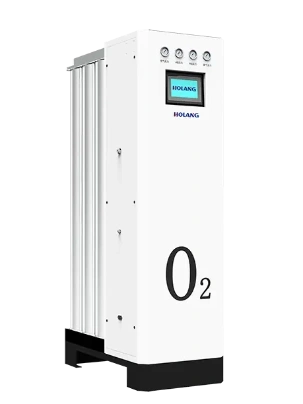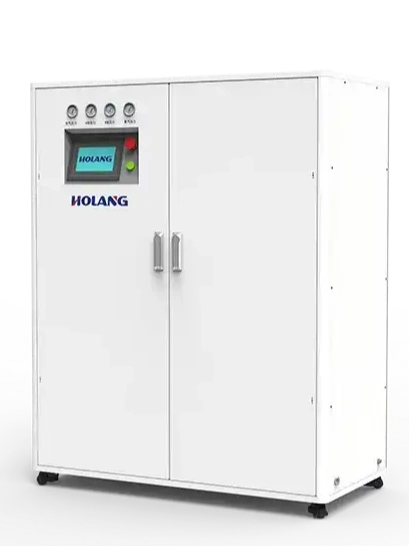Abstract:
The adoption of on-site nitrogen generation represents a pivotal shift for numerous industries seeking to enhance operational autonomy, reduce costs, and improve safety. This document provides a comprehensive examination of the principles and practical considerations involved in selecting an appropriate nitrogen generator. It explores the two primary technologies, Pressure Swing Adsorption (PSA) and membrane separation, detailing their distinct operational mechanisms and suitability for different applications. A systematic framework is presented for evaluating critical parameters such as required nitrogen purity, flow rate, and total cost of ownership, moving beyond the initial acquisition price. The analysis extends to the importance of system sizing for future scalability, the implications of maintenance schedules, and the value of supplier support. By grounding the discussion in technical specifics and economic realities, this guide aims to equip decision-makers with the necessary knowledge to invest in a nitrogen generation system that aligns with their specific industrial requirements and long-term strategic goals, ensuring a sound return on investment.

Key Takeaways:
- Evaluate PSA for high-purity needs and membrane technology for high-volume, lower-purity tasks.
- Precisely match the nitrogen purity level to your specific industrial application to avoid overspending.
- Calculate your peak nitrogen flow rate accurately to prevent system bottlenecks or inefficiencies.
- Analyze the total cost of ownership, not just the initial price of the nitrogen generator.
- Choose a system size that accommodates both current demand and potential future growth.
- Prioritize suppliers who offer robust technical support and readily available spare parts.
- Verify that the equipment holds essential certifications like ISO 9001 and CE for quality assurance.
Table of Contents:
- Point 1: Grasping the Core Technologies - PSA versus Membrane
- Point 2: Defining Your Purity Requirements with Precision
- Point 3: Calculating Your Flow Rate and Consumption Needs
- Point 4: Analyzing the Total Cost of Ownership Beyond the Sticker Price
- Point 5: Sizing Your System for Today and Tomorrow
- Point 6: Evaluating Maintenance Needs and Supplier Support
- Point 7: Verifying Certifications and Industry Compliance
- Frequently Asked Questions About Nitrogen Generators
- A Final Reflection on Strategic Gas Generation
Point 1: Grasping the Core Technologies - PSA versus Membrane
Embarking on the path to on-site nitrogen generation begins with a foundational understanding of the two dominant technologies available in 2025: Pressure Swing Adsorption (PSA) and membrane separation. One might think of them as two distinct philosophies for achieving the same goal—isolating nitrogen from the ambient air we breathe. Air is, after all, approximately 78% nitrogen, 21% oxygen, and 1% other gases. The challenge lies in efficiently filtering out everything else.
A PSA nitrogen generator operates on a principle of selective adsorption. Imagine a sponge that soaks up water but repels oil. The "sponge" inside a PSA generator is a material called Carbon Molecular Sieve (CMS). When compressed air passes through a vessel filled with CMS, the sieve material preferentially captures oxygen molecules due to their smaller size, allowing the larger nitrogen molecules to pass through as the desired product gas (Minnuogas, 2025). These systems typically use two identical vessels that alternate functions—one adsorbs oxygen while the other regenerates by depressurizing, which releases the captured oxygen back into the atmosphere. This continuous swing in pressure gives the technology its name and ensures an uninterrupted flow of nitrogen.
Membrane nitrogen generators, by contrast, function more like a microscopic sieve. Compressed air is forced through a bundle of hollow polymer fibers. The walls of these fibers are semi-permeable, meaning they allow certain gases to pass through them faster than others. Oxygen, carbon dioxide, and water vapor are "fast" gases that quickly permeate the membrane wall and are vented away, while nitrogen, a "slow" gas, travels the length of the fiber and is collected at the outlet (Organomation, 2024). The elegance of this method lies in its simplicity; there are very few moving parts.
The choice between these two is not a matter of one being universally superior. The decision rests entirely on the specific demands of your application.
A Tale of Two Technologies: PSA vs. Membrane:
| Feature | Pressure Swing Adsorption (PSA) Generator | Membrane Generator |
|---|---|---|
| Purity Level | Capable of very high purities, up to 99.999% | Typically provides lower to medium purities, from 95% to 99.5% |
| Mechanism | Adsorbs oxygen onto a Carbon Molecular Sieve (CMS) bed under pressure. | Separates gases using bundles of semi-permeable hollow fiber membranes. |
| Best For | Electronics manufacturing, pharmaceuticals, laser cutting, and lab applications. | Tire inflation, fire prevention, food preservation, and oil and gas operations. |
| Energy Efficiency | More efficient at higher purity levels. | More efficient at lower purity levels and higher flow rates. |
| Maintenance | Requires periodic replacement of filters and CMS material (long-term). | Membrane cartridges may need replacement over time; fewer moving parts overall. |
| Initial Cost | Generally higher initial capital investment. | Often a lower initial capital investment. |
When to Choose PSA:
A PSA nitrogen generator is the clear choice for applications where nitrogen purity is paramount. Think of semiconductor manufacturing or pharmaceutical packaging, where even the slightest presence of oxygen could compromise the final product. PSA systems can consistently deliver purities of 99.9% to 99.999% (UHP - Ultra High Purity). While they represent a larger initial investment, their efficiency at producing high-grade nitrogen makes them more cost-effective in the long run for these demanding roles (Advanced Gas Technologies, 2022). They are the precision instruments of the nitrogen generation world.
When to Choose a Membrane System:
Conversely, if your application requires a large volume of nitrogen but can tolerate a lower purity level, a membrane generator becomes a very attractive option. Consider fire suppression systems in data centers or modified atmosphere packaging for certain foods, where a nitrogen purity of 95% to 98% is perfectly sufficient to displace oxygen and achieve the desired effect. Membrane systems shine in these scenarios, often offering a lower upfront cost and simpler operation due to their lack of moving parts. They are the workhorses, built for high-capacity, continuous-duty tasks where peak purity is not the primary objective.
Point 2: Defining Your Purity Requirements with Precision
After grasping the technological foundations, the next critical step is to look inward at your own processes. What level of nitrogen purity does your application genuinely require? This question is far from academic; it is perhaps the single most significant factor influencing both the capital cost and the long-term operational expense of your nitrogen generator. Answering it with precision is the key to avoiding a common pitfall: paying for purity you do not need.
It's helpful to think of nitrogen purity not as a simple percentage but as the inverse of the remaining oxygen content, often measured in parts per million (PPM). For example, 99.999% pure nitrogen contains only 10 PPM of oxygen. The energy and complexity required to remove those last few parts per million of oxygen increase exponentially.
Matching Purity to Purpose:
Let's examine how different industries align with specific purity levels. The needs of a food packager are vastly different from those of a laser cutting facility.
| Nitrogen Purity | Residual O₂ | Common Applications |
|---|---|---|
| 95% - 98% | 5% - 2% | Tire inflation, fire prevention, some food preservation. |
| 98% - 99.5% | 2% - 0.5% | Blanketing of chemicals, marine applications, beverage dispensing. |
| 99.5% - 99.95% | 5000 - 500 PPM | Food packaging (MAP), plastic injection molding, most laser cutting. |
| 99.99% | 100 PPM | Heat treatment of metals, some pharmaceutical applications. |
| 99.999% | 10 PPM | Electronics manufacturing (SMT), semiconductor production, analytical labs. |
The Cost of Unnecessary Purity:
Imagine a scenario: You run a small brewery and want to use nitrogen to purge tanks and transfer beer, preventing oxidation. A purity of 99.5% is more than adequate for this task. However, if you were to purchase a system capable of producing 99.999% purity, you would be paying a premium for both the PSA technology required and the higher energy consumption needed to achieve that level. It would be like buying a Formula 1 car for a daily commute—an impressive piece of engineering, but entirely mismatched for the job and unnecessarily expensive to run.
Therefore, consult your process engineers, review industry standards, and if necessary, run tests to determine the minimum purity level that guarantees product quality and safety. Resisting the temptation to specify "99.999% just to be safe" can lead to substantial savings over the life of the equipment.
Point 3: Calculating Your Flow Rate and Consumption Needs
With your purity requirement defined, the next piece of the puzzle is determining your required nitrogen flow rate. Flow rate, typically measured in Standard Cubic Feet per Hour (SCFH) or Normal Cubic Meters per Hour (Nm³/h), represents the volume of nitrogen your facility consumes. Accurately calculating this figure is essential for sizing your nitrogen generator correctly.
An undersized generator will be unable to keep up with demand, leading to pressure drops and production halts—a frustrating and costly situation. Conversely, an oversized generator represents a needless capital expense and will operate inefficiently, consuming more power than necessary for the nitrogen it produces.
How to Determine Your Flow Rate:
Determining your nitrogen consumption is not always straightforward. You cannot simply look at the outlet port of a machine. You must consider all points of use within your facility.
- Direct Measurement: The most reliable method is to conduct a gas audit. This involves placing flow meters at various points of use over a representative period, such as a full production week. This captures the fluctuations between peak and average consumption.
- Equipment Specifications: Manufacturers of equipment that use nitrogen (like laser cutters or SMT ovens) often provide specifications for nitrogen consumption at different operating settings. Summing these figures for all your equipment provides a good baseline, but remember to account for simultaneous operation.
- Calculation from Cylinder Usage: If you are currently using high-pressure cylinders or liquid dewars, you can estimate your consumption. For example, a standard high-pressure cylinder in the US holds about 244 cubic feet of nitrogen. If you use five cylinders per week, your average consumption is (5 * 244) / (40 work hours) = 30.5 SCFH. The critical part here is to account for peak usage, which will be much higher than the average. It is wise to size the system for your peak demand, not the average.
Planning for Peaks and Valleys:
Industrial nitrogen consumption is rarely constant. A laser cutting shop might have three machines running simultaneously for two hours, followed by an hour of inactivity. A food packaging plant might run at full capacity for an eight-hour shift and then shut down.
Your nitrogen generator system must be designed to handle these peaks. This is often accomplished by pairing the generator with a nitrogen receiver tank. The generator runs steadily to fill the tank, which then acts as a buffer, supplying high volumes of nitrogen on demand without forcing the generator to be sized for that absolute peak moment. This is a much more efficient and cost-effective approach.
Point 4: Analyzing the Total Cost of Ownership Beyond the Sticker Price
A common mistake when purchasing industrial equipment is focusing solely on the initial price tag. For a nitrogen generator, the purchase price is only one component of the Total Cost of Ownership (TCO). A truly informed decision requires a broader perspective that encompasses all expenses over the system's lifespan, which can often exceed 20 years with proper care (Advanced Gas Technologies, 2022).
The financial case for on-site generation is compelling. Switching from delivered gas cylinders or liquid nitrogen can often yield a return on investment (ROI) in as little as 12 to 14 months (Gas Generation Solutions, 2024). However, understanding the TCO helps you compare different models and technologies more accurately.
The Components of TCO:
Let's break down the costs you need to consider:
- Capital Expenditure (CapEx): This is the upfront purchase price of the nitrogen generator, air compressor, filtration system, and receiver tanks. Prices can range significantly, from a few thousand dollars for small systems to over $100,000 for large industrial installations (Minnuogas, 2024).
- Installation Costs: This includes the expenses for piping, electrical work, and labor to set up the system. The complexity of the installation will depend on your facility's layout.
- Energy Costs: The single largest operational expense will be the electricity required to run the air compressor. The compressor is the heart of the system, and its energy consumption is directly tied to the volume and pressure of the nitrogen you produce. More efficient generators require less compressed air for the same nitrogen output, leading to significant long-term savings.
- Maintenance Costs: This includes routine service and the replacement of consumable parts. For both PSA and membrane systems, this means regular replacement of filter elements. For PSA generators, the CMS material has a very long lifespan but is a future cost to consider. For membrane systems, the membrane modules themselves may eventually need replacement.
- Eliminated Costs: The other side of the TCO coin is the money you save. This includes the cost of delivered nitrogen, cylinder rental fees, delivery charges, Hazmat fees, and the administrative overhead of ordering and managing gas supplies.
By modeling these costs over a 5, 10, or 15-year period, you can see how a slightly more expensive but more energy-efficient nitrogen generator might actually be the less expensive option in the long run.
Point 5: Sizing Your System for Today and Tomorrow
Sizing a nitrogen generator is a delicate balance. You need a system that can comfortably meet your current peak demand, but you should also give thoughtful consideration to the future. Is your business likely to expand? Will you be adding another production line or a new piece of nitrogen-consuming equipment in the next five years?
Investing in a system that is too small for future needs can be a costly error, potentially requiring a complete replacement. On the other hand, a grossly oversized system leads to wasted capital and inefficient operation.

The Virtue of Modularity:
One elegant solution to this challenge is the adoption of modular nitrogen generators. A modular design allows you to purchase a system that meets your current needs, with the built-in capability to add more generation modules later as your demand grows.
Think of it like building with LEGO bricks. You start with the foundation you need now. If you need to expand, you simply add another brick. This "pay-as-you-grow" approach offers tremendous financial flexibility. It minimizes the initial capital outlay while ensuring your investment is future-proof. You are not forced to make a speculative guess about your five-year plan; you can adapt your gas generation capacity in direct response to your business's growth.
The Role of the Receiver Tank:
As mentioned earlier, proper sizing is not just about the generator itself but about the entire system, including the receiver tank. A larger receiver tank can help a smaller generator manage high, intermittent demand. The generator can run for longer periods at its most efficient point to fill the tank, which then supplies the peak flow. Working with an experienced engineer or supplier is vital to correctly size both the generator and the tank to create the most efficient and responsive system for your unique consumption pattern (General Air Products, 2024).
Point 6: Evaluating Maintenance Needs and Supplier Support
A nitrogen generator is a long-term asset, and like any critical piece of machinery, its reliability depends on proper maintenance and the support of its manufacturer or supplier. When evaluating different options, you are not just buying a machine; you are entering into a long-term relationship.
The quality of post-sale support can be the difference between a system that runs flawlessly for decades and one that causes persistent headaches. Before making a purchase, it is wise to investigate the supplier's reputation for service.
Key Maintenance Considerations:
While modern nitrogen generators are designed for high reliability, they are not "set it and forget it" devices. Routine maintenance is necessary to ensure optimal performance and longevity.
- Air Filtration: The most critical maintenance task is servicing the pre-filtration system. The compressed air entering your nitrogen generator must be clean, dry, and oil-free. Contaminants can permanently damage the Carbon Molecular Sieve in a PSA unit or the fibers in a membrane unit. This involves regularly checking and replacing coalescing filter elements according to the manufacturer's schedule.
- Oxygen Analyzer Calibration: The built-in oxygen analyzer, which verifies the purity of your product gas, should be calibrated periodically to ensure its readings are accurate.
- Leak Detection: Regular checks for air or nitrogen leaks in the system piping can save a surprising amount of money in wasted energy.
Understanding these common failure points and troubleshooting methods is important for minimizing downtime (Minnuogas, 2025).
Assessing Supplier Support:
When vetting a potential supplier, ask direct questions about their support infrastructure:
- Technical Support: Do they have a team of experienced technicians available to help diagnose issues over the phone or on-site?
- Spare Parts Availability: How quickly can they provide replacement parts like filter elements, valves, or sensors? A generator that is down for a week waiting for a part can halt your entire operation.
- Service Plans: Do they offer preventative maintenance plans where a certified technician services your equipment on a regular schedule? This can provide peace of mind and catch potential issues before they become major problems.
A reputable supplier will be transparent about these services and view them as a core part of their offering (General Air Products, 2024).
Point 7: Verifying Certifications and Industry Compliance
The final point on our checklist is a crucial one that speaks to the quality, safety, and reliability of the equipment: certifications. In a global marketplace, certifications serve as a universal language of quality assurance. They demonstrate that a manufacturer adheres to rigorous, internationally recognized standards for design, production, and safety.
For a significant capital investment like a nitrogen generator, you want the assurance that it has been built to last and operate safely within your facility.
What to Look For:
Two of the most important certifications to look for are ISO 9001 and CE.
- ISO 9001:2015: This is a standard that specifies requirements for a quality management system (QMS). When a company is ISO 9001 certified, it means they have established and follow clear processes for everything from product design and development to production and customer service. It is a powerful indicator of a company's commitment to quality and continuous improvement. It suggests that the customized gas systems they produce are the result of a well-managed and documented process.
- CE Marking: The CE mark is a certification mark that indicates conformity with health, safety, and environmental protection standards for products sold within the European Economic Area (EEA). Even if you are in the United States, the CE mark is a valuable indicator. It shows that the product has undergone a rigorous conformity assessment and meets a high baseline for safety. It means the electrical systems are safe, the pressure vessels are built to code, and the machine does not pose an undue risk to operators.


Choosing a nitrogen generator from a manufacturer that holds these certifications provides an essential layer of confidence. It assures you that the equipment is not only effective but also safe, reliable, and produced by a company dedicated to quality.
Frequently Asked Questions About Nitrogen Generators
What is the typical lifespan of a nitrogen generator?
With proper and consistent maintenance, a high-quality nitrogen generator can have a very long service life. PSA systems, in particular, can often operate for 20 years or more. The most critical factor is maintaining the quality of the compressed air feeding the system. The Carbon Molecular Sieve (CMS) in a PSA unit can last for over a decade if it is protected from moisture and oil.
How much energy does a nitrogen generator use?
The primary energy consumer in the system is the air compressor. The exact energy usage depends on the flow rate and purity of the nitrogen being produced. Higher purity and higher flow rates require more compressed air, and therefore more energy. When comparing models, look at the "air-to-nitrogen ratio"—the amount of compressed air required to produce one unit of nitrogen. A lower ratio indicates higher efficiency.
Can I install a nitrogen generator myself?
While some smaller, "plug-and-play" systems can be installed with relative ease, most industrial systems require professional installation. This involves connecting the system to a dedicated compressed air line, piping the nitrogen to the points of use, and handling the electrical connections. Using a certified technician ensures the system is installed safely and operates at peak efficiency.
Is the nitrogen produced on-site as good as delivered nitrogen?
Yes. An on-site nitrogen generator produces nitrogen of a specific, controllable purity. For any given application, you can set the generator to produce nitrogen that is equal to or even exceeds the purity of the bulk liquid or cylinder gas you were previously using. The key advantage is that you control the purity and only produce what you need.
What are the main safety considerations with a nitrogen generator?
The primary safety concern is the risk of asphyxiation in an enclosed space. Nitrogen itself is inert and non-toxic, but it displaces oxygen. It is vital that any room housing a nitrogen generator is well-ventilated. Systems should be equipped with an ambient oxygen sensor that will trigger an alarm if the oxygen level in the room drops below a safe threshold (typically 19.5%).
A Final Reflection on Strategic Gas Generation:
Thinking through these seven points illuminates a clear path forward. The decision to invest in a nitrogen generator transcends a simple equipment purchase; it is a strategic move toward greater operational efficiency, cost control, and self-sufficiency. It is an act of taking control of a critical utility rather than renting it from an outside vendor. By carefully considering the nuances of technology, matching purity and flow to your genuine needs, and evaluating the full economic picture, you can select a system that serves not just as a tool, but as a catalyst for a more streamlined and profitable operation for years to come. The right nitrogen generator is an investment in the resilience and future growth of your enterprise.
